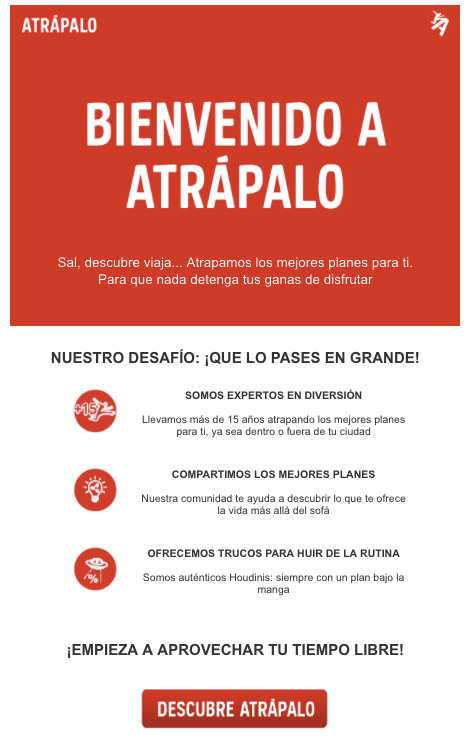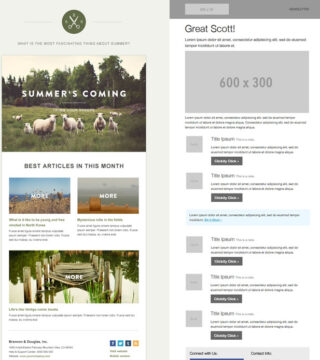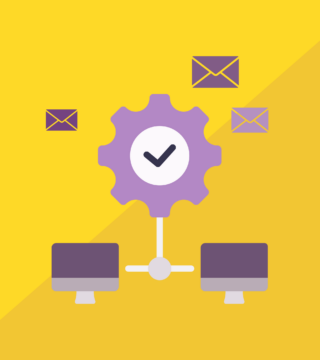Drip Marketing: What It Is and Advantages in Email Marketing Campaigns
the 23 of May of 2024
the 23/05/2024

Did you know that drip marketing is revolutionizing the field of digital marketing? It’s a key strategy that allows you to connect with your audience. So much so that recent studies have shown that these types of campaigns can increase email open rates by up to 80%, demonstrating their effectiveness in generating engagement and conversions. In this article, we’ll explore what this technique is and how to create an effective strategy to make the most of this tool.
TABLE OF CONTENTS
What is Drip Marketing?
Drip marketing is an automated marketing strategy that involves the scheduled and sequential sending of personalized emails. This technique is based on delivering the right content at the right time for each user, resulting in a more personalized and relevant experience. Its goal is to build strong relationships with subscribers, increase brand loyalty, and drive conversions.
Types of Drip Marketing Campaigns
After understanding what drip marketing is, let’s explore the different types of campaigns available so you can fully leverage its potential in your business strategy:
- Welcome Campaigns: The goal is to offer a warm greeting to create a positive first impression, which is crucial for laying the foundation for a lasting relationship.
- Educational Campaigns: These messages allow brands to build authority and loyalty by becoming a reliable source of information.
- Lead Nurturing Campaigns: Through strategic emails, the relationship with prospects is nurtured and strengthened to increase conversion chances.
- Re-engagement Campaigns: Through exclusive offers, relevant content, or reminders, these campaigns aim to recover lost customers and boost long-term retention.
- Confirmation Campaigns: These messages include automatic confirmations of transactions, subscriptions, or registrations, providing peace of mind to the customer while reinforcing the company’s legitimacy and professionalism.
- Product Recommendation Campaigns: By personalizing recommendations, you can increase sales and improve the customer experience, making them feel valued for their needs.
- Abandoned Cart Campaigns: These messages are directed at customers who have left products in their cart without completing the purchase.
- Upselling and Cross-selling Campaigns: These emails include additional or higher-value products or services related to the original purchase, providing a more complete and satisfying shopping experience.
- Renewal Campaigns: These are reminders for customers whose subscriptions are about to expire. Their goal is to renew the commitment to the brand, either through value reminders or special offers.
- Special Dates or Event Campaigns: By being present during important moments in customers’ lives, brands can create strong emotional bonds and achieve long-term loyalty.
How to Create a Drip Marketing Campaign
If you want to achieve optimal results from your drip marketing campaigns, here are the steps to follow:
1. Define Clear and Measurable Objectives:
Before starting, it’s essential to determine the goals you want to achieve—whether it’s increasing sales, improving customer retention, or boosting conversion rates—to guide the development of the campaign.
2. Segment Your Target Audience:
To deliver a more relevant and personalized message, it’s important to segment your audience into more specific groups based on demographic characteristics, behaviors, or interests.
3. Design a Detailed Workflow for Emails:
Plan the sequence and content of your emails, ensuring that each message adds value at different stages of the buying process.
4. Create Relevant and Personalized Content:
Craft messages that resonate with different segments of your audience to build lasting relationships. To do this, simply offer solutions to their specific needs and desires.
5. Set Triggers and Timing Based on Behavior or Dates:
Develop automated actions to send messages in response to certain user behaviors or important dates, ensuring they arrive at the right moment.
6. Integrate Strategic Calls to Action (CTAs):
Include clear and persuasive calls to action in the content you send to guide subscribers toward the next step in the buying process or interaction.
7. Use A/B Testing to Optimize Subjects and Content:
Conduct A/B testing to evaluate which subject lines, content, or visual elements generate the best results for your business.
8. Automate and Schedule the Email Sequence:
Use automation tools to efficiently and timely send emails, maintaining continuous communication with your audience.
9. Monitor Metrics and KPIs:
It’s important to measure your campaign’s performance through different metrics like open rates, clicks, or conversions so that you can make necessary adjustments and continuous improvements.
10. Make Adjustments Based on Data Analysis and Feedback:
Finally, analyze the data and feedback from subscribers to identify areas of opportunity and make the appropriate adjustments to your marketing campaign, ensuring long-term effectiveness.
In summary, by providing relevant and personalized content at the right time, drip marketing campaigns can achieve greater engagement, loyalty, and ultimately, conversions. For this reason, it’s important to follow careful planning and strategic execution so that brands can optimize their results.





















